DBA terrain
We have, in the past, played around with more realistic terrain, such as shaped hills. These look great, but aren't that practical as the troop elements kept sliding off.
Now we mainly just use flat card to define the terrain areas, with some bits of moveable terrain to define the terrain type.
Now we mainly just use flat card to define the terrain areas, with some bits of moveable terrain to define the terrain type.
Waterways
I have four sections, each 300 mm long. The width at the ends is either 1 BW (40 mm) or 3 BW (120 mm). This enables the sections to be used in a variety of configurations.
They are made from thin MDF. The sand and edges are acrylic mastic, coated in sand. The sea is painted and then coated with several layers of clear silicone sealant.
We count everything above the waterline to be easy going.
They are made from thin MDF. The sand and edges are acrylic mastic, coated in sand. The sea is painted and then coated with several layers of clear silicone sealant.
We count everything above the waterline to be easy going.
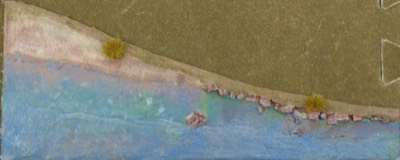
Thick-thin waterway 1
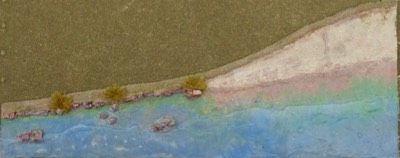
Thick-thin waterway 2
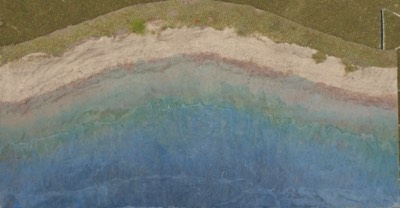
Thick-thick waterway 1
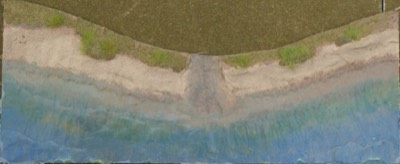
Thick-thick waterway 2
Linear features
These are from Timecast. I have 300 mm long sections, and a whole load of ford and curved sections (not shown).
I painted them with acrylic paint and then varnished them. I wish I had used silicone sealant instead of varnish, and the latter quickly cracked.
I painted them with acrylic paint and then varnished them. I wish I had used silicone sealant instead of varnish, and the latter quickly cracked.
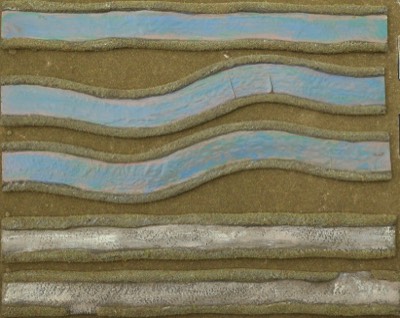
Various river and road sections
Area features
I use thin MDF with flock paper stuck on both sides (using spray adhesive).
The flock paper is from Woodland Scenics (search for "ReadyGrass").
I chose to use 'Summer Grass' on one side, to match my DBA board, and 'Spring Grass' on the other. Which side I have facing up depends on the terrain type.
The flock paper is from Woodland Scenics (search for "ReadyGrass").
I chose to use 'Summer Grass' on one side, to match my DBA board, and 'Spring Grass' on the other. Which side I have facing up depends on the terrain type.
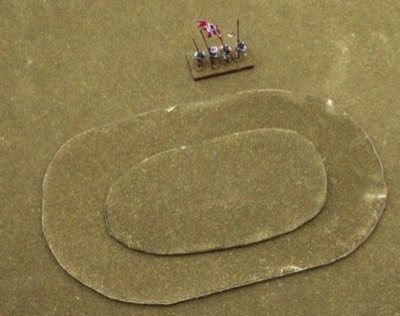
Difficult hill. We use a single piece to indicate a gentle hill.
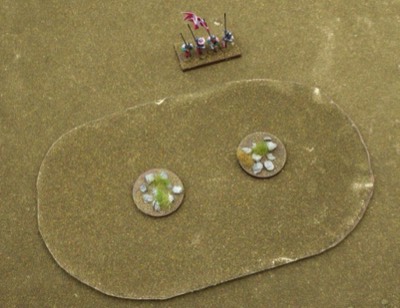
Rocky ground. Made from cat litter.
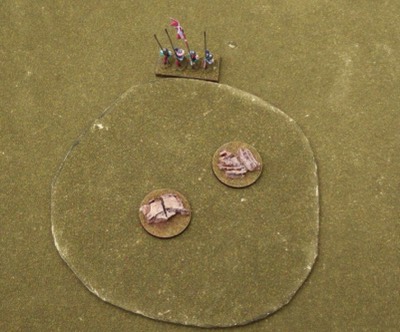
Rocky ground. Another variant, using broken cork.
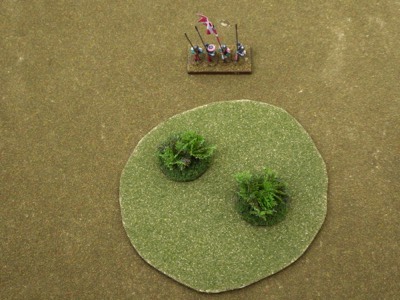
Marsh. Made from plastic aquarium plant parts.
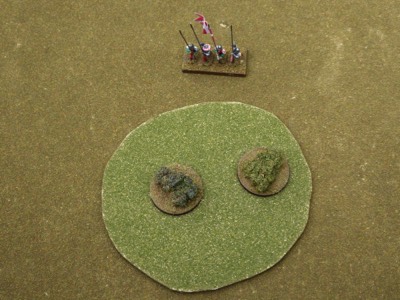
Rough ground. Made from clump foliage from Woodland Scenics.
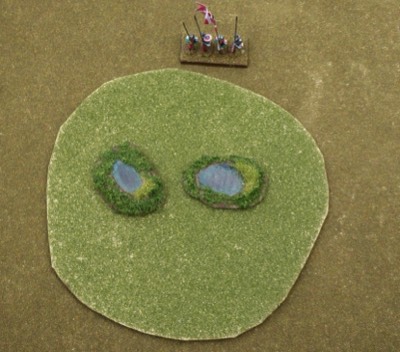
Boggy ground. Made in the same way as the waterway.
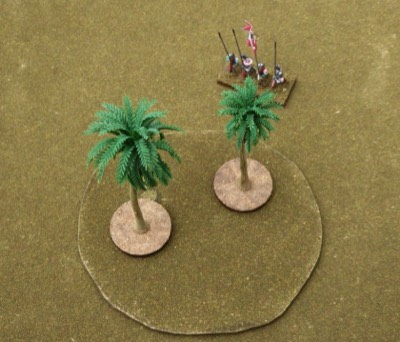
Oasis.
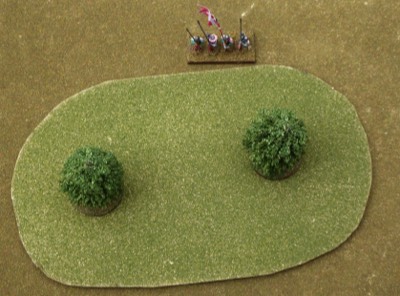
A wood, designated by some wire-brush-type trees..
Built-up areas
The fort is free-standing. Other BUAs normally use a rectangular base, with a few buildings placed on it.
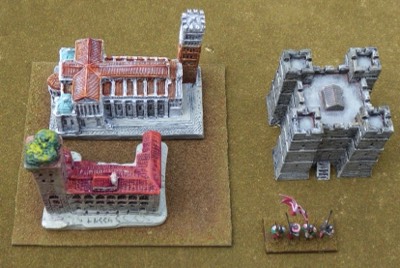
A city or town (left) and a fort (right).
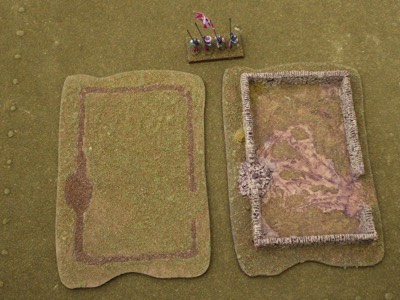
An earlier design of enclosure. The right-hand part sits on the left, and is removed when elements are in the enclosure. Now I would just use the left-hand part with a few pieces of removable wall.

